|
Drivers
Cabinet
Crossover
Speaker Kit
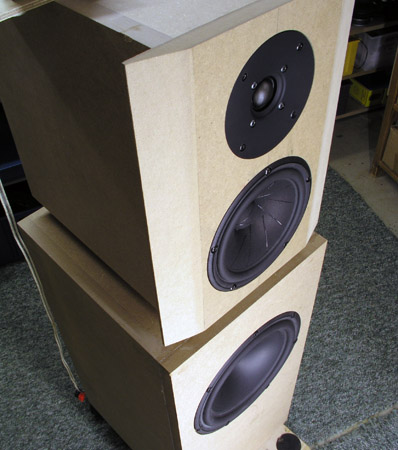
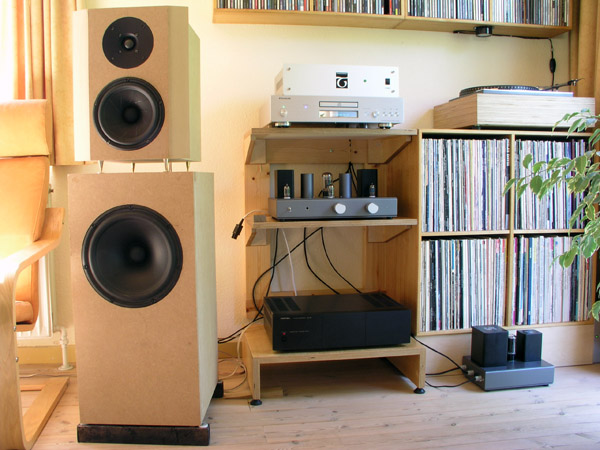
Prototype speakers
This project started with
Steen Jensen writing he'd acquired 2 x 26W/8861T00 bass drivers
and after the usual some 20+ mails, the top part of this
big 3-way became the 18W/8531G00 for mid and D2905/9900
for treble due to another diy'er giving up his
project. Not a bad choice! The 18W/8531G00 can go low in
a suitable top cabinet and possibly a simple crossover
could be implemented to mate bass and mid.
I never had the opportunity to do a crossover for the
9900, and having read on the web that this tweeter was a
tough one, I never applied for those second hand samples
available from time to time. The 9900 measures excellent
and modelling the crossover was even easier. So far, this
tweeter looks easy.
Soldering the test crossover
didn't take long and it was immediately clear that this
speaker was quite different from any other big speaker
I'd done. The level of transparency was almost scary and
bass was dry and firm with excellent timing. Not the
deep, fat, overhung kind of bass we're used to from some
vented systems, but short and firm - almost like a horn
loaded bass driver. Some will miss the boomy bass I'm
sure and the cure is simple: Skip the Variovents and
insert a port.
The 9900 tweeter seems excellent. Probably the best of
the Revelator domes. I like the 9500 but never really
came to terms with the 9700, being a bit edgy to my ears.
The 9900 is basically the same as the 9700, only having
the "constant directivity" faceplate - and I
like what I hear. It has a presence quality like my DTQWT
system.
The 18W/8531-G00: I never
heard the level of transparency from this driver until
this speaker. Free of the tedious task of pumping deep
bass, distortion seems significantly reduced and you
can't help playing this speaker loud - because it can
be played loud. The wider than normal front panel seems
to add a certain amount of warmth to the midrange. The
big 26W is taking the heat and the 18W is at ease. I
wonder how a true mid-driver from the sliced paper (18W
size) would perform. Another surround and a short voice
coil - underhung. Well, SS will probably never make such
a driver.
Size of the bass cab is
an issue and if size is of prime concern, 60 liters
vented will do and makes an F3 = 34 Hz, where 80 liters
ported provides a slightly deeper bass, F3 = 30 Hz, and
this seems an overall good compromise. From 80 liters net
volume and Variovents the F3 is around 43 Hz.
Variovent'ed boxes cannot be calculated but are generally
close to closed boxes, but having a slightly shallower
roll-off profile, i.e. it reached a bit deeper, but not
much.
I know
that raw MDF cabs turn people off, so here's what Bob in Holland made
of it. Click image to go to full website.
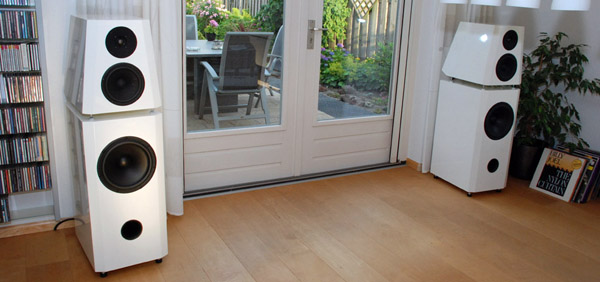
The
Drivers
back to
top
ScanSpeak data sheets:
26W/8861T00 +
18W/8531G00 +
D2905/9900
Click
to download data files.

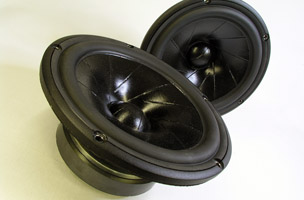
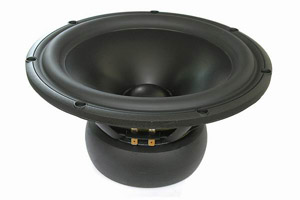
Shown here is the 18W/8530G00, the
coated version; same performance as 8531.
The Cabinets
back to
top
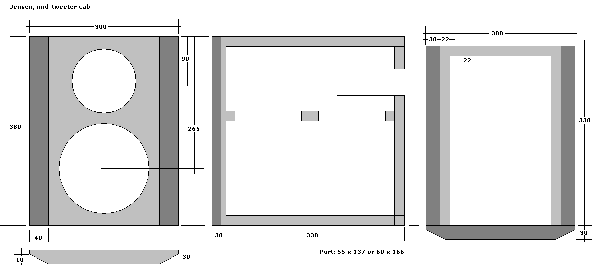
Mid cab. Click image to view large.
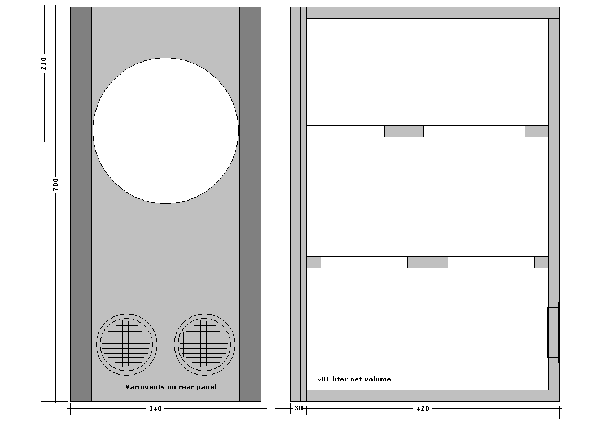 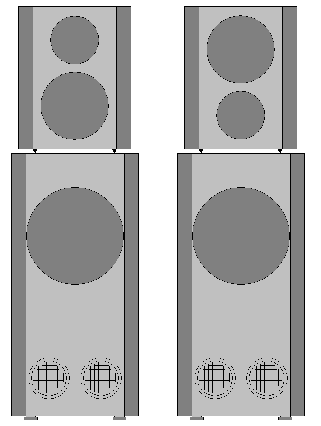
Bass cab, here 80 liters shown. Click images to view
large.
If 60 liter is preferred, reduce bass cab width to 30 cm
and adjust depth to make 60 liter net volume.
Maintain bass driver placement approx. 21 cm from top of
bass cab.
Right: Last minute before Steen took off
with his speakers again, we tried inverting mid-cabs.
The bass cabs was tilted approx. 5-6 deg and the midcab
was turned upside down and had a wedge
to keep vertical position. This definitely didn't sound
bad, so give it a try before the final decision is made.
FAQs:
More detailed cabinet drawings are not available.
You may place a port on the front if you like.
Check out this for damping: Cabinet Damping and also this
for ideas: QUATTRO.htm
Box simulation
back to
top
The ScanSpeak 26W/8861T00 is potent bass
driver and how should it be used? Closed? Vented?
Aperiodic (Variovents)?
Good questions that need to be answered. Let's look at 60
liter and 80 liter net volume for the bass.
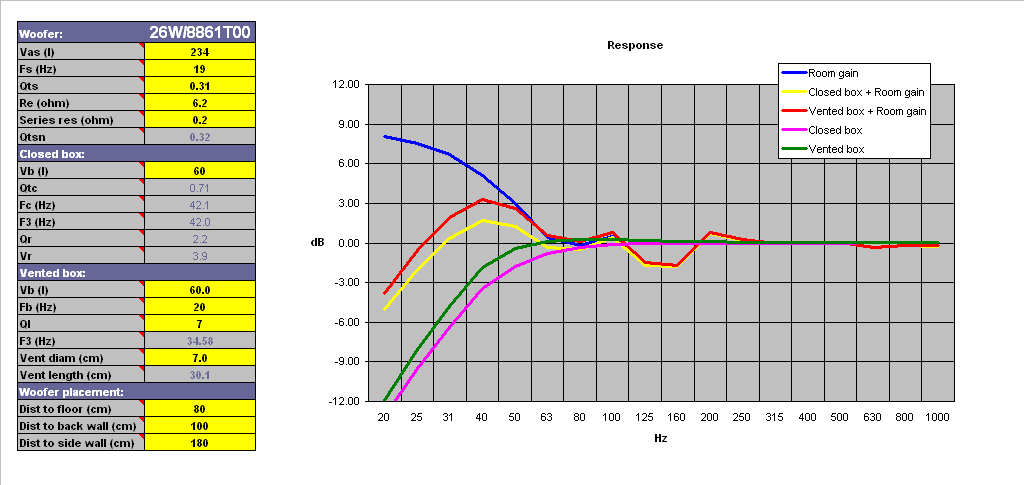
Above a 60 liter closed and vented box. F3 = 42 and 35 Hz
respectively. Notice the room-gain at given placement.
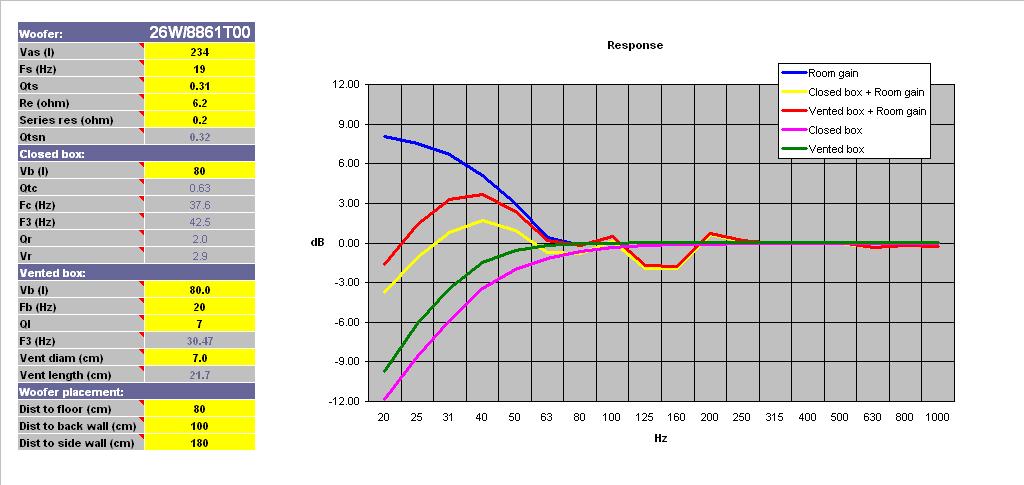
80 liters closed and vented, F3 = 43 and 30 Hz
respectively.
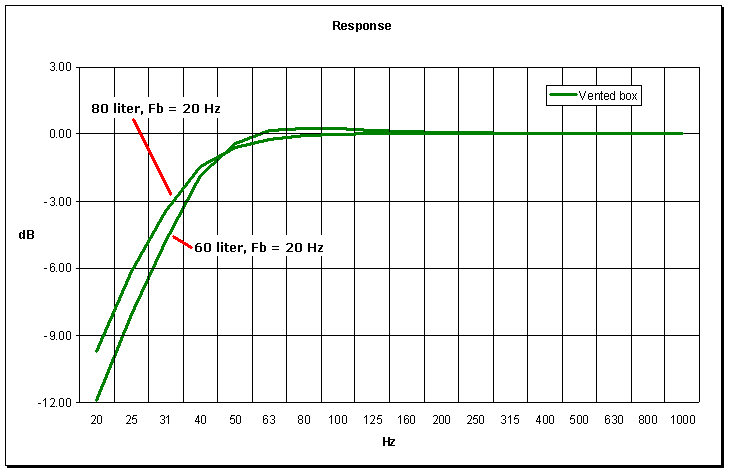
Comparing 60 and 80 liters vented. Fb (port tuning) = 20
Hz for both.
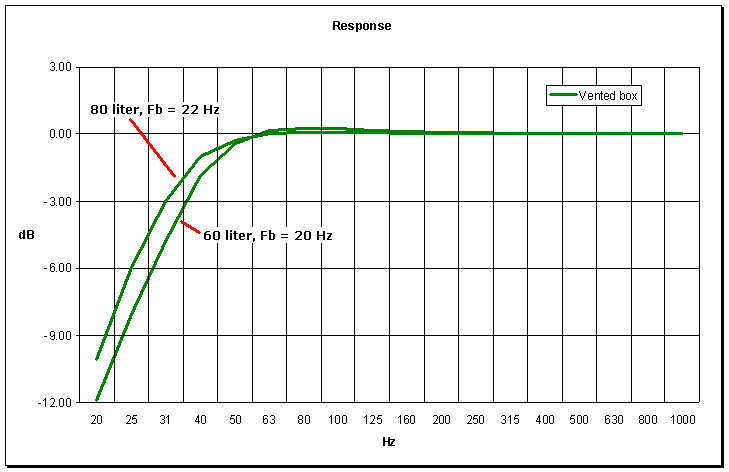
Comparing 60 and 80 liter vented, but with 80 liter port
tuning at 22 Hz.
Ports and Variovents, bass cab
In case you choose Variovents: 2 pcs per
cabinet. Please google "variovent" and find out
where to buy them.
Ports for 60 liter, Fb = 20 Hz, port
dimensions = 60 mm (ID) x 220 mm or 70 mm (ID) x 300 mm
Ports for 80 liters volume, Fb = 22 Hz, port dimensions =
68 mm (ID) x 162 mm* or 80 mm (ID) x
232 mm.
*(68 x 220 mm port
supplied with crossover kit)
For 60 liter vented options the ports will
be rather long at adequate diameter.
I do not suggest a 60 mm port for this 10" bass
driver.
If you use two ports, double port length for same
diameter.
Port for mid cab
Net volume = 21.5 liter, port tuning (Fb)
= 37 Hz:
50 mm (ID) x 111 mm (50 x 145 mm port
supplied with crossover kit)
55 mm (ID) x 137 mm, or
60 mm (ID) x 166 mm
Measurements
back to
top
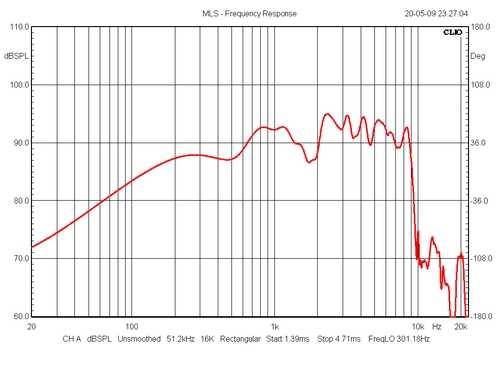 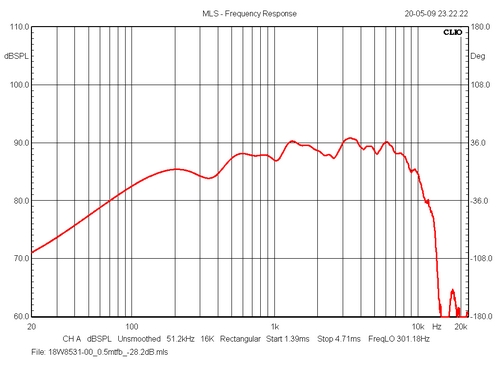
Left: 26W/8861T00 SPL @ 1m/2.8V. Right:
18W/8531G00 SPL @ 1m/2.8V
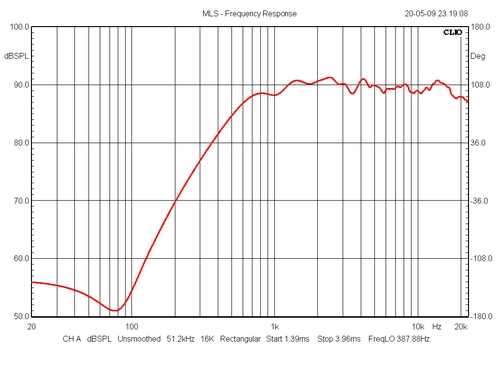 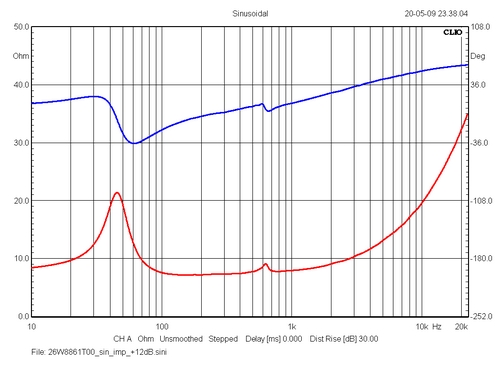
Left: 9900 SPL @ 1m/2.8V. Right: 26W bass
driver's impedance in cab with two Variovents.
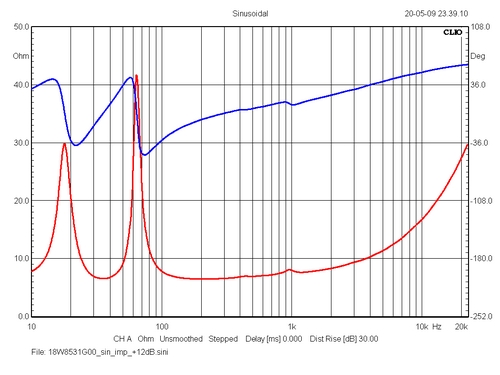 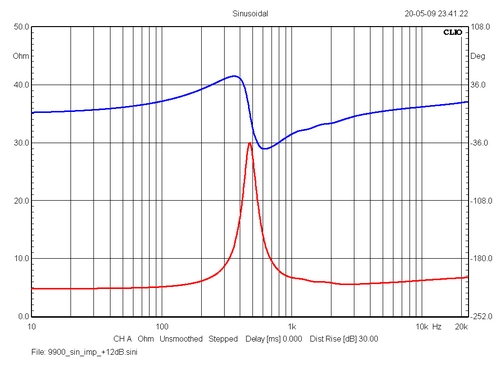
Left: 18W/8531G00 impedance in vented mid
cabinet, Fb = 37 Hz. Right: 9900 impedance.
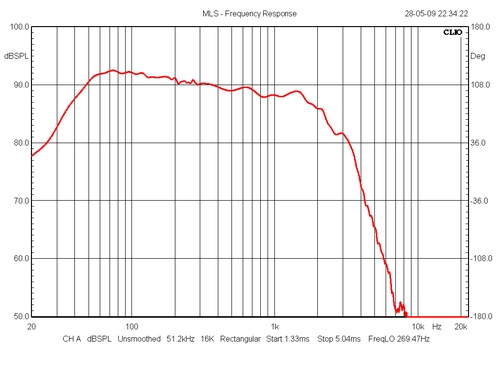

Left: SPL @ 1m, 2.8V. Response from bass and mid with
bass merged with nearfield response at 300 Hz.
Right: SPL from BM + T. Point of crossover is 2700 Hz.
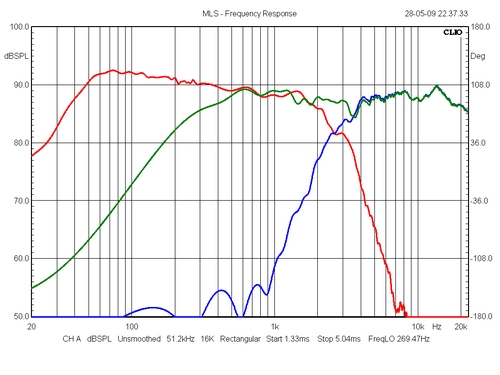 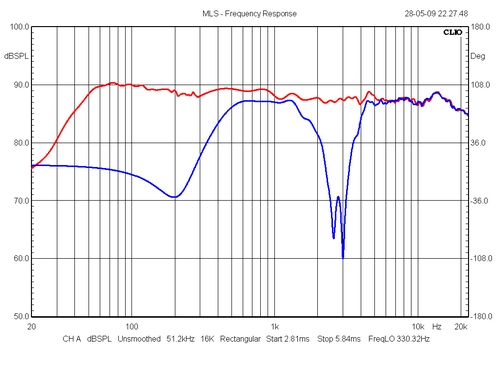
Left: Same as right above, only the mid high-pass slope
shown.
Right: Inverting mid polarity has a dramatic impact on
response - and should have.
Point of crossover between bass and mid around 200 Hz as
predicted.
Some phase tracking between mid and tweeter needs
attention, see below.
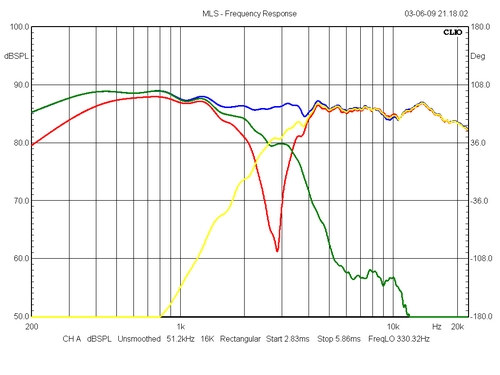 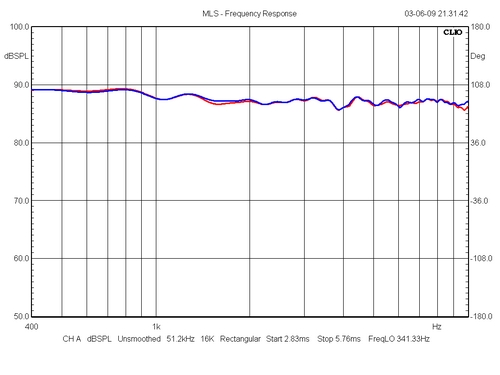
Left: A little fine-tuning of mid and tweeter sections
made this performance. The "problem" is the
little notch on the 8531 roll-off at 3 kHz.
The sonic significance of this is close to zero. The
speaker sounded the same as before and no further
fine-tuning can be justified.
Right: 400-10,000 Hz range for left and right speaker; a
matched pair as good as can be.
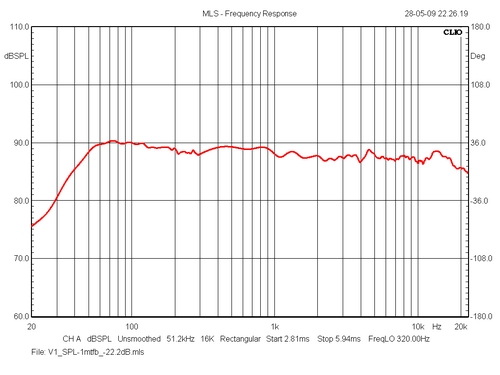 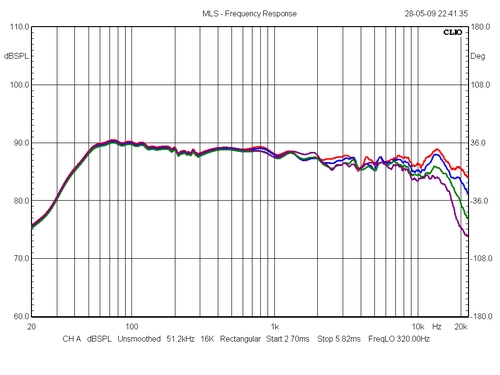
Left: Overall system response with merged bass nearfield
response. Quite a flat tuning and an overall smooth
midrange.
Right: Horizontal dispersion at 0, 10, 20 and 30 deg.
Doesn't get much better than this.
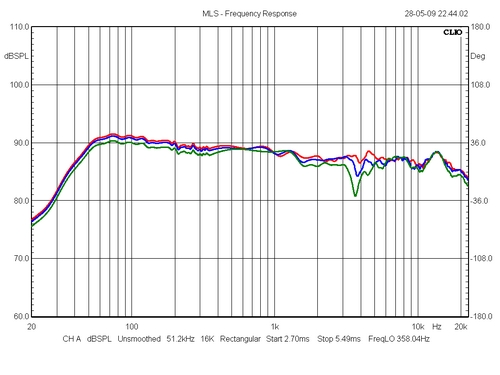 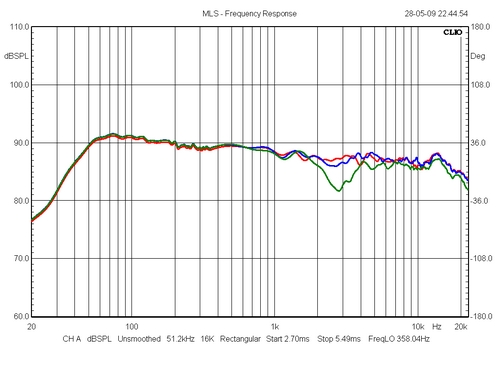
Left: Vertical dispersion at 0, 5 and 10 deg. up. Right:
Vertical dispersion at 0, 5 and 10 deg. down.
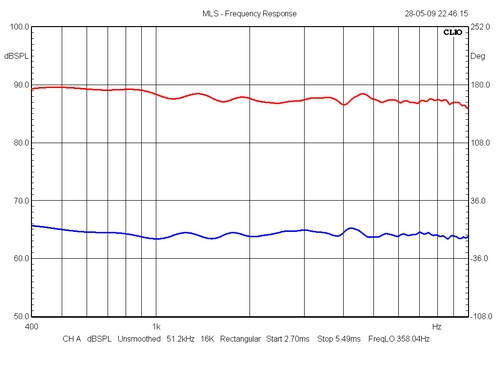
The 400-10000 Hz range. Pretty smooth I dare say.
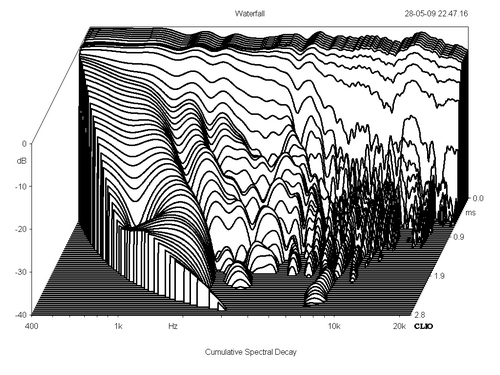 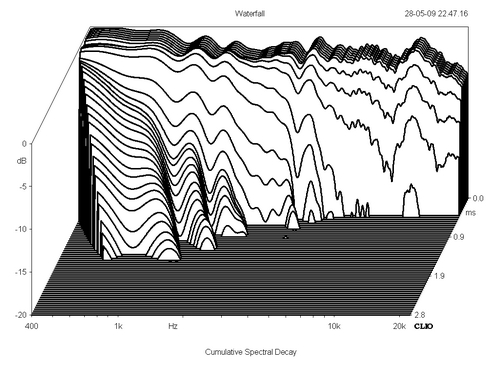
Left: CSD at 40 dB scaling. Right: CSD at 20 dB scaling.
Final Crossover
back to
top
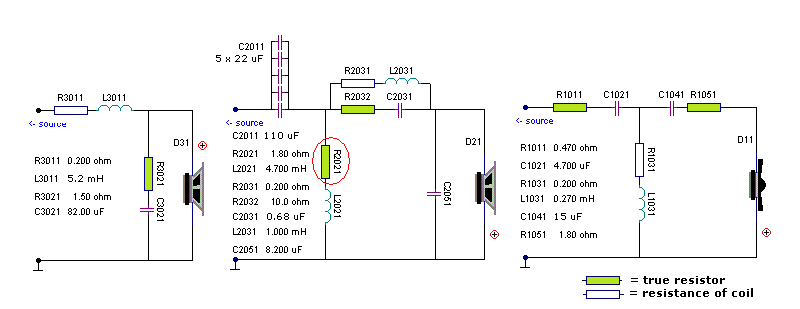
Note: L2021, suggested DCR = 2.2 ohms, thus R2021 not
needed!
Crossover
Components
back to
top
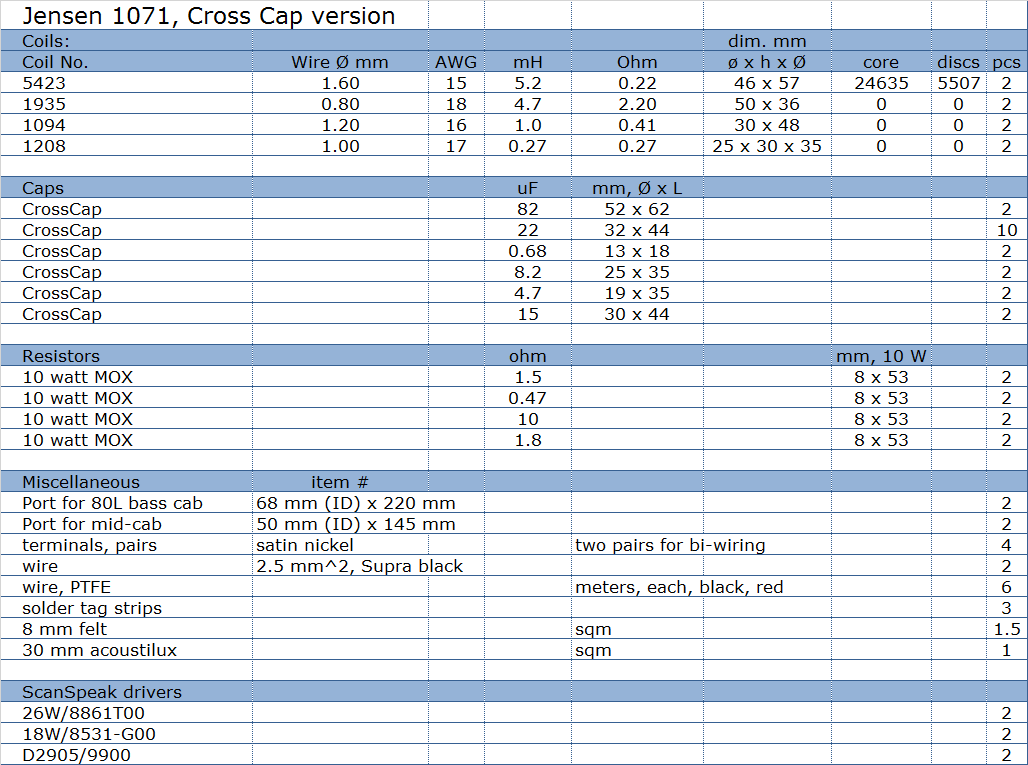
Kit with/without
drivers available from Jantzen Audio:
contact@jantzen-audio.com
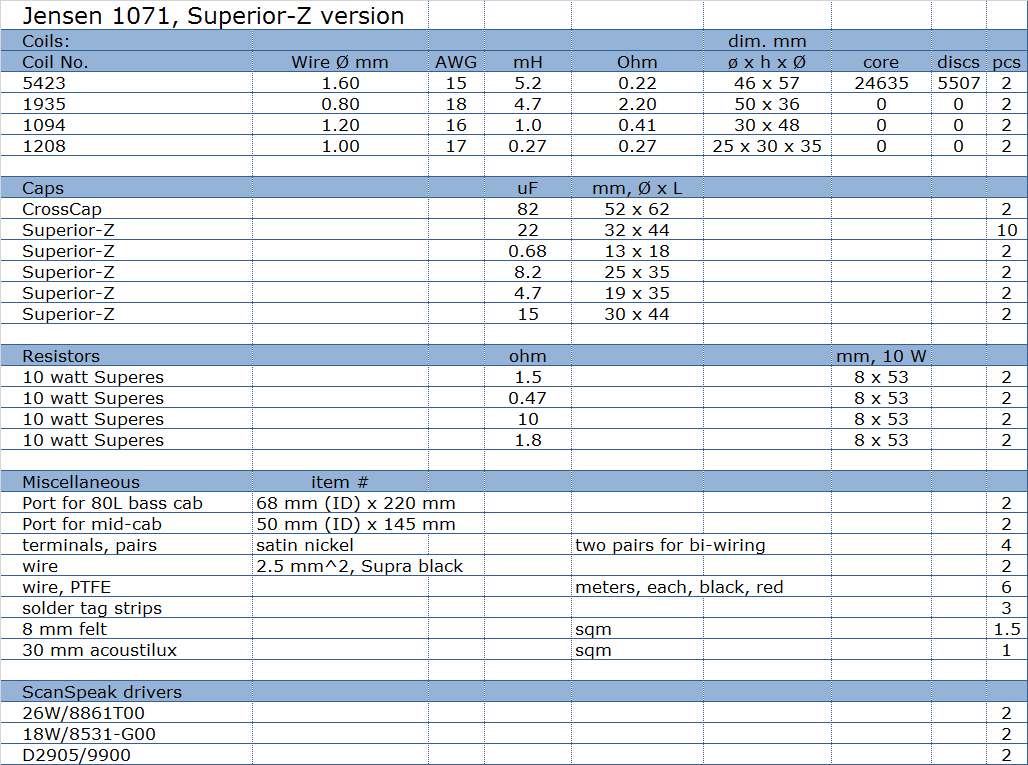
All technical questions to
troels.gravesen@hotmail.com
back to
top
|





























